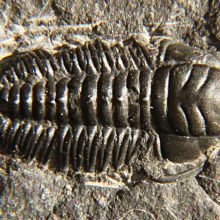-
- Get access
- Contains open access
- ISSN: 0094-8373 (Print), 1938-5331 (Online)
- Editor: Erin Saupe University of Oxford, UK
- Editorial board
Latest featured article
Intraspecific facial bite marks in tyrannosaurids provide insight into sexual maturity and evolution of bird-like intersexual display
Caleb M. Brown, Philip J. Currie and François Therrien
- Read the full article (published Open Access) here.
Latest articles
Paleobiology « Cambridge Core Blog

-
Trilobites’ growth may have resembled that of modern marine crustaceans
- 14 August 2022,
- Trilobites- extinct marine arthropods that roamed the world’s oceans from about 520 million years ago until they went extinct 250 million years...

-
The importance of soft-bodied organisms in ancient food webs
- 02 August 2021,
- Past extinction events are key to understanding how modern life will respond to climate change. For ecologists who study communities of interacting organisms,...
News
Rise of the Mesozoic sea dragons
- 20 Sep 2016,
- New research published in the journal Paleobiology by palaeobiologists from the University of Bristol shows that marine reptiles such as ichthyosaurs and plesiosaurs burst onto the scene, rather than expanding slowly into their ecosystems.
Testing ideas about the evolution of long-necked sauropod dinosaurs
- 20 Sep 2016,
- Research reveals how sauropods may have been able to bear such tremendous loads without causing injury or compromising mobility.


Twitter